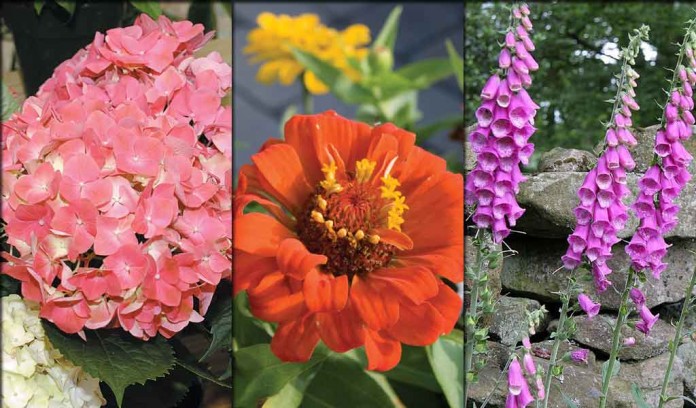
When you’re shopping for seeds, you’ll notice that packets are labeled with annual, perennial and sometimes biennial.
Here’s a run-down of what annuals, perennials and biennials are:
Annuals
Annuals are varieties that only grow for one season. After the annual plant’s growing season, the blooms, leaves, stems and roots will all die. Annuals leave behind mature, dormant seeds that can be planted the following year.
If you want annual varieties every year, you have to plant seeds (or seedlings) every year.
In the garden, the National Gardening Association says that common annuals include zinnias, cosmos, beans and broccoli.
Perennials
Perennials are plants that grow for more than two years, according to the National Gardening Association. Every perennial’s life span is different; some will continue to grow for decades while others will grow for just a few years.
Typically, just the top portion of perennials die back in the winter. In the spring, new growth comes from the same root system as the year before. Once perennials are done blooming for the season, some may keep their leaves year-round.
Texas A&M Aggie Horticulture explains that when perennials are grown from seed, blooms will not appear in the first year. In the second year and in subsequent years, you’ll see blooms in either the spring or summer.
Perennials are typically herbaceous, non-woody plants, but trees and woody shrubs may also be called perennials since their life spans are longer than one season.
Some common perennials include asters, clematis, hosta, hydrangeas, peonies and purple coneflowers.
Biennials
Some plants may be biennial, meaning they complete their entire life cycle in two years.
For the first year of a biennial plant’s life cycle, Oregon State University Extension says only a short stem and foliage will grow. During the second year, the entire plant will grow and then die at the end of the season.
The National Gardening Association lists foxgloves, Canterbury bells, kale, cabbage, Brussels sprouts, carrots and celery as biennials.













